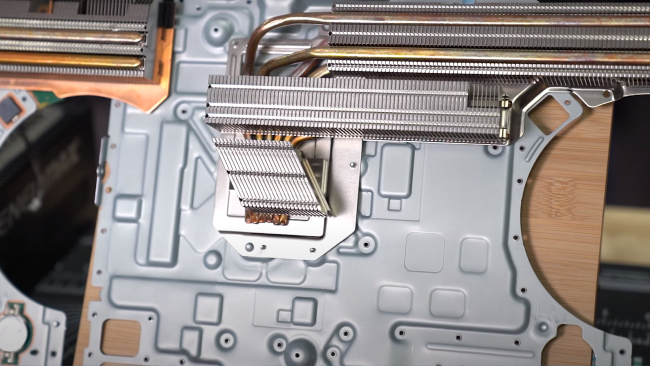YouTuber Austin Evans caused a bit of a kerfuffle when he declared the new model of the PS5 with a distinctly smaller heatsink to be “worse” than the original launch model. Later testing rapidly debunked these claims, revealing performance to be unchanged, and many believing that the original massive heatsink was simply overengineered (an observation Evans himself made before declaring the new one “worse”). Additional testing on the temperature of the console actually found the new one to potentially run cooler on the components themselves—the hotter air Evans measured at the exhaust seemed to be from a more efficient cooling system expelling hot air and cooling the console.
Gamers Nexus and Digital Foundry got together to do some rather extensive and definitive testing on both the cooling and the performance of the revised PS5 console to finally put the rumors about it to rest. Their conclusion? There are basically no differences between the consoles, at least not any that are worth pursuing one console over the other.
At the beginning of Gaming Nexus’ 37-minute video, Editor-in-Chief Steve Burke says “we have so much data that we’re not going to be able to fit it all in one video,” highlighting just how much testing they did to obtain in-depth thermal data for the effectiveness of the heatsinks on both models. While testing did find some differences, the determination was that these are well within an acceptable margin of error based on multiple variables, and don’t ultimately matter to the end user. One of these differences was accounted for based on the different fans that Sony has used in PS5 consoles.
Additionaly, Digital Foundry finds that the new revised PS5 console runs virtually identically to the old one. The original video from Austin Evans had surmised that less efficient cooling could impact performance, but because the PS5 don’t run like PCs with power variances, these limits set in place allow the console to maintain consistency despite changes to the cooling. They tested this by placing the revised PS5 inside a confined TV cabinet for two hours running Control’s photo mode (which uncaps the boost clock) and then set about testing, still finding no differences in the various benchmarks. “Operationally, it’s the same machine,” Digital Foundry’s Richard Leadbetter said.
You can watch the full video for yourself below:
If you want a bit more insight into the performance of the two consoles, Digital Foundry also released a more extensive performance video sharing their findings.
A big piece of this puzzle comes from some people attributing logic from custom PC builds to dedicated and specifically engineered consoles, which are two different worlds. While a variance of a couple of degrees can make a difference within a custom PC build—something that one might attribute as “worse” in that scenario—the PS5 is engineered in such a way that performance and power draw are consistent, so a variance of a few degrees is not going to impact the end-user performance. Additionally, those variances can be attributed to numerous variables across the entire console build, not just the design of the heatsink itself.
This seems to shut the book pretty definitively on whether or not the revised PS5 design is “worse.” Both outlets have determined after extensive testing that it’s not worth pursuing one or the other specifically, and that the end-user experience and functionality remains virtually identical between the two consoles.
[Via: The Verge]








